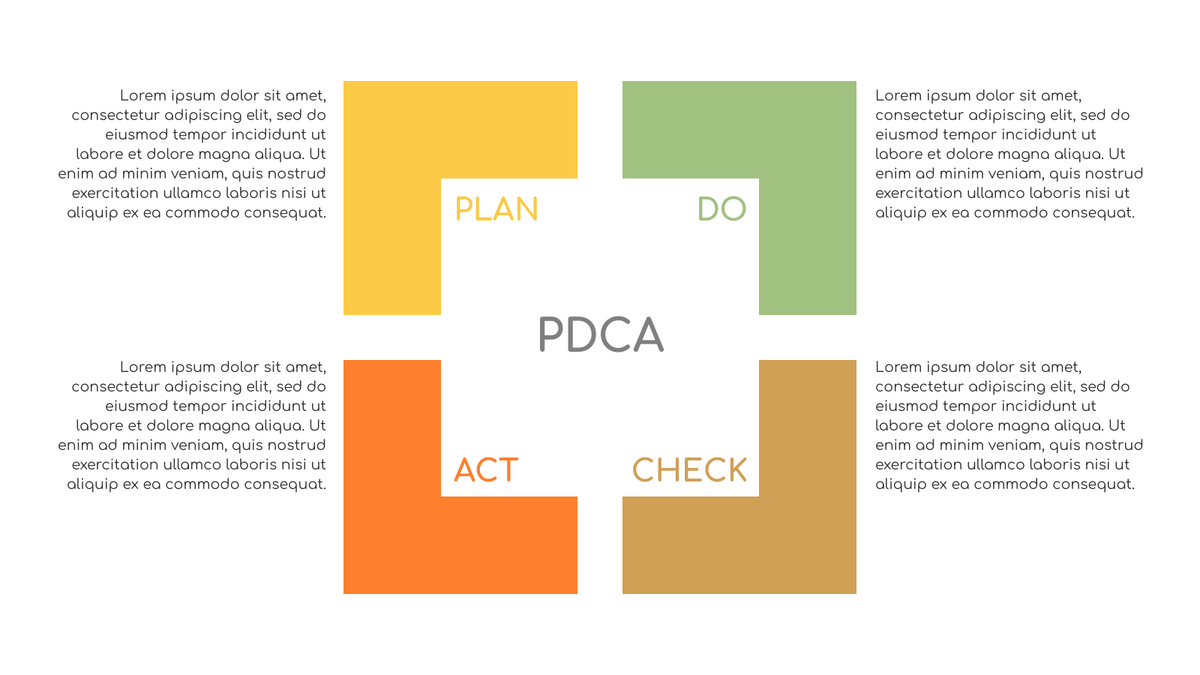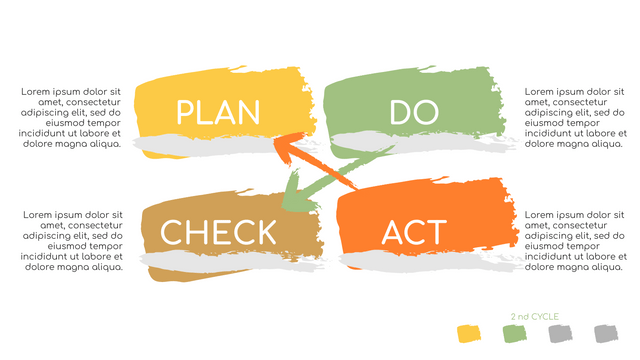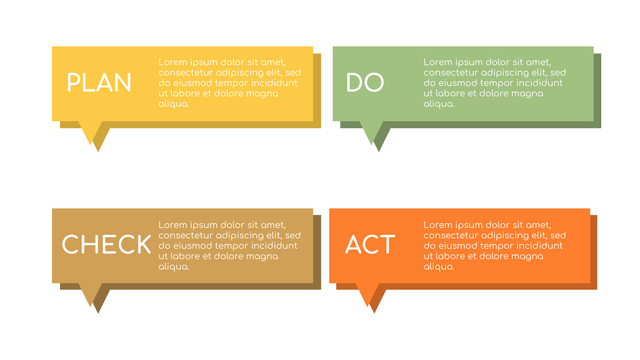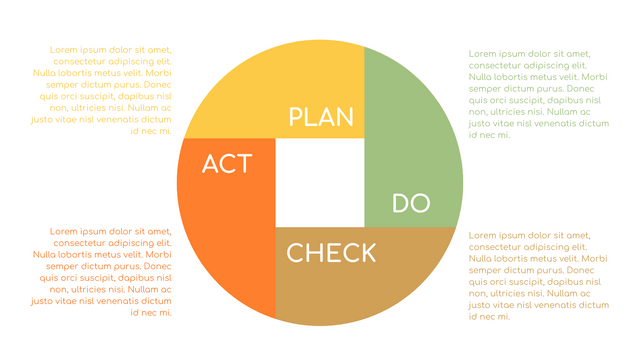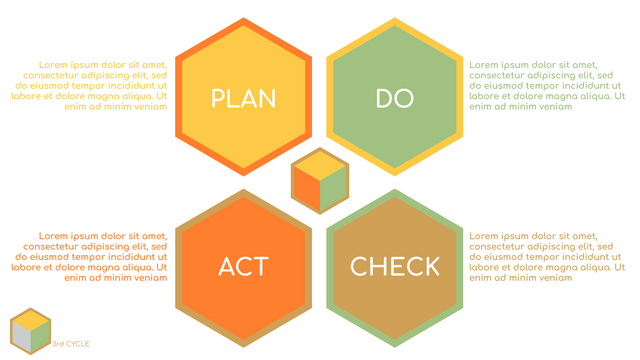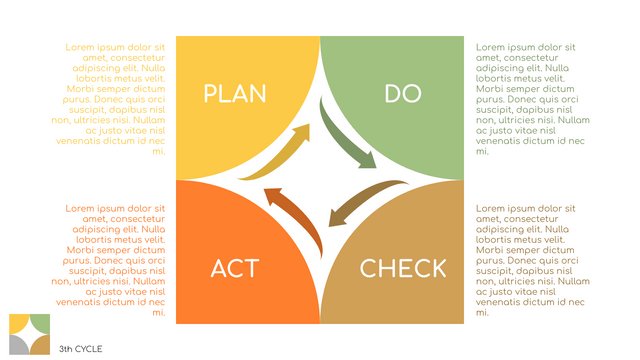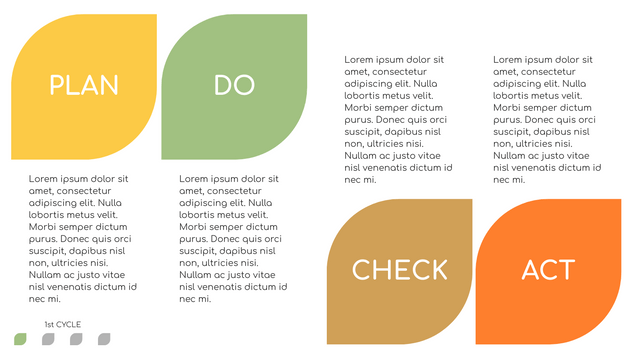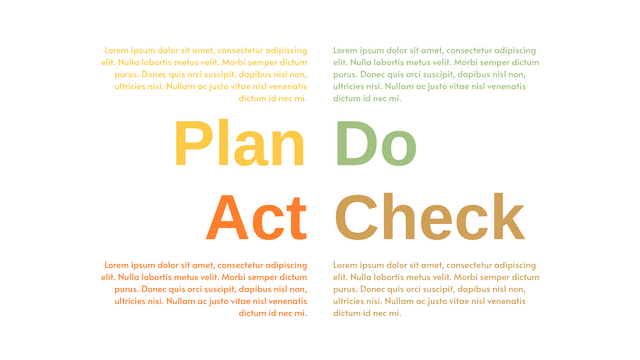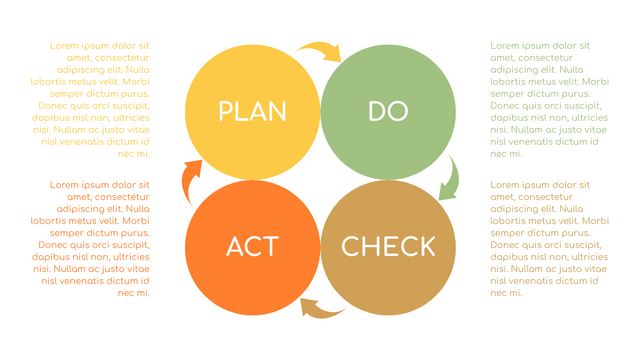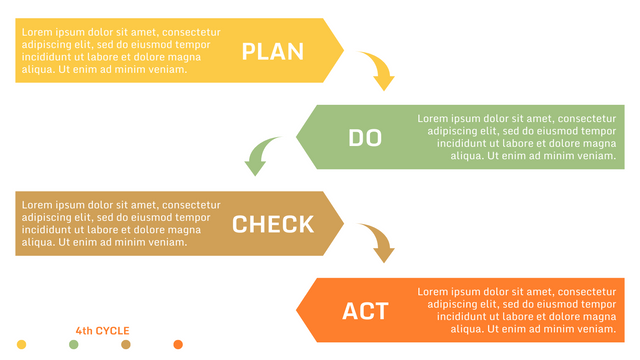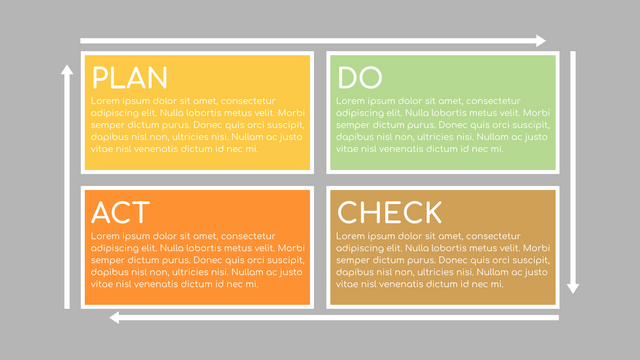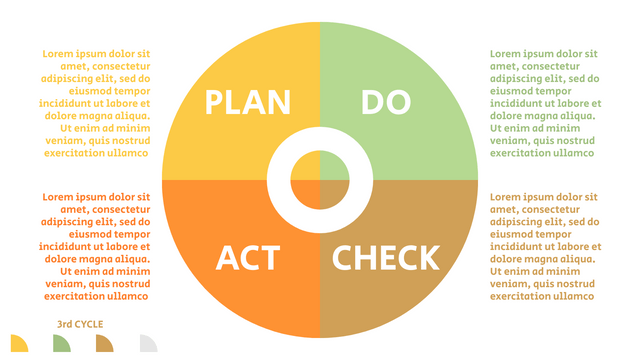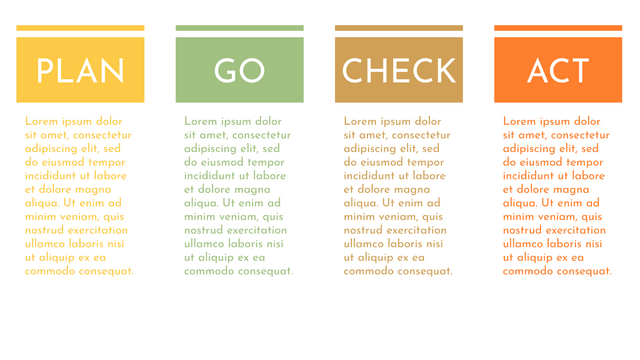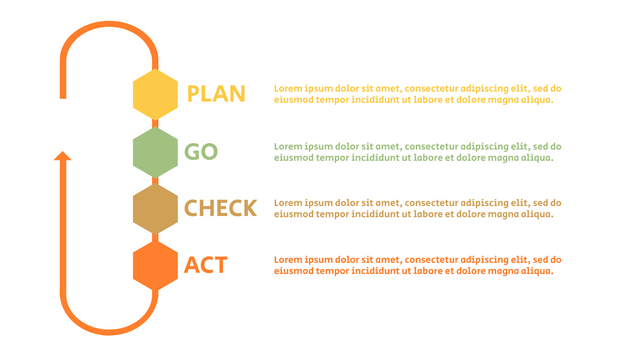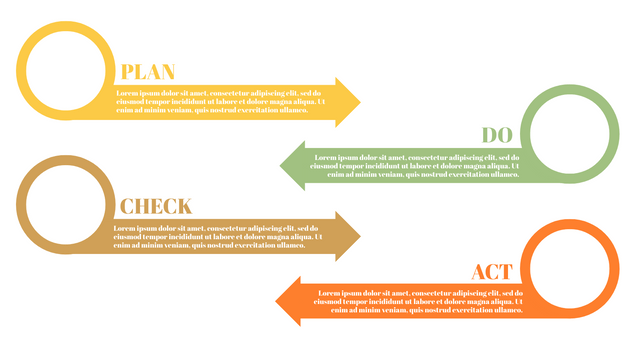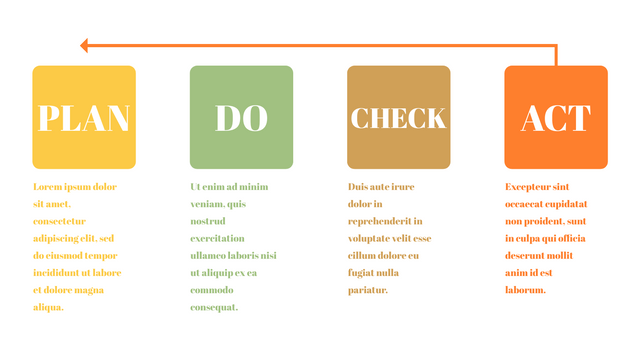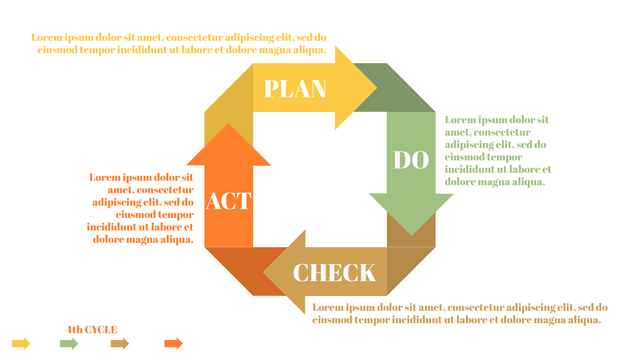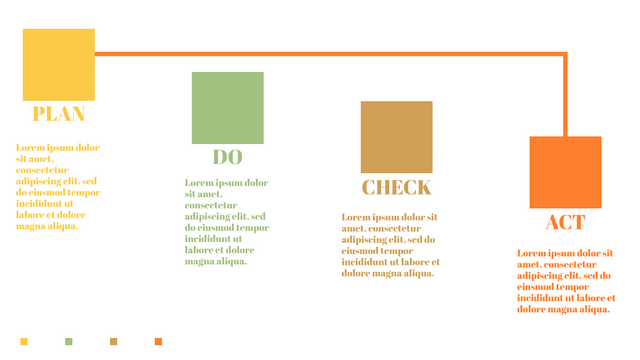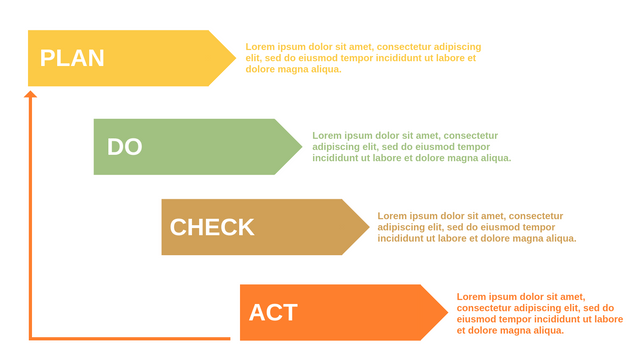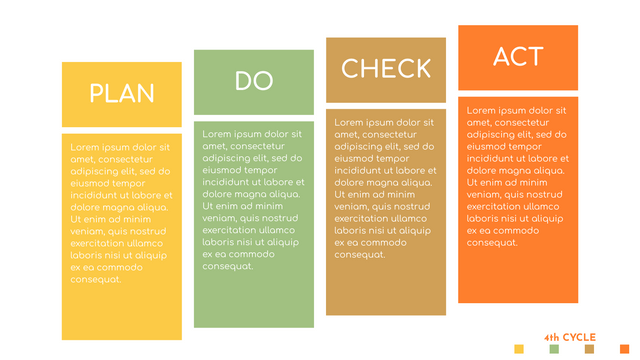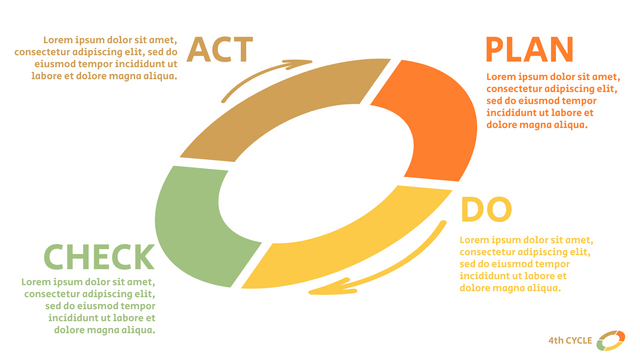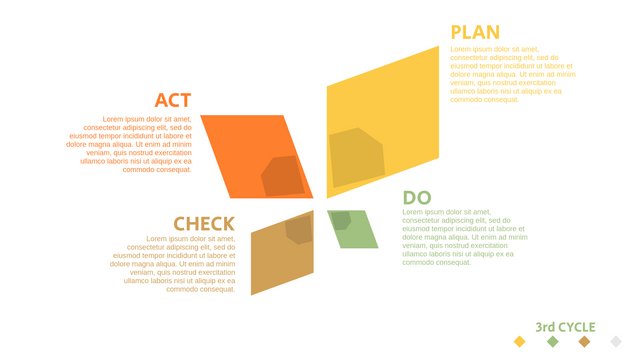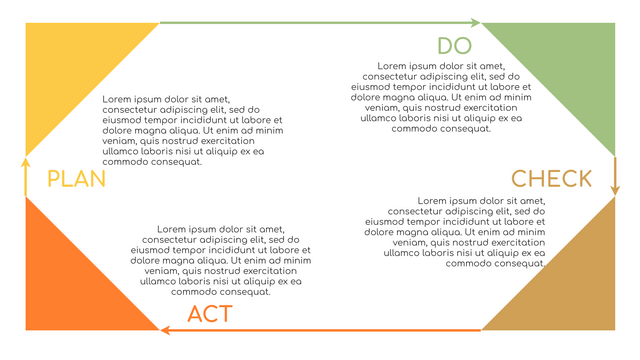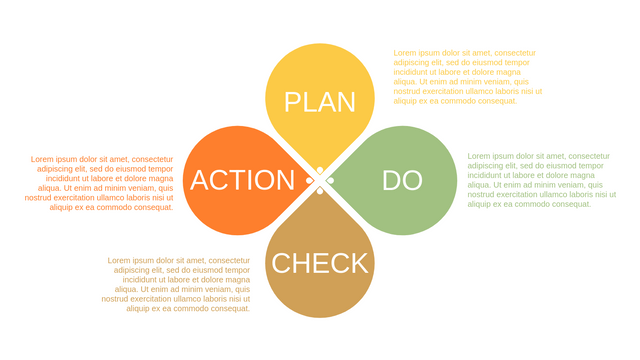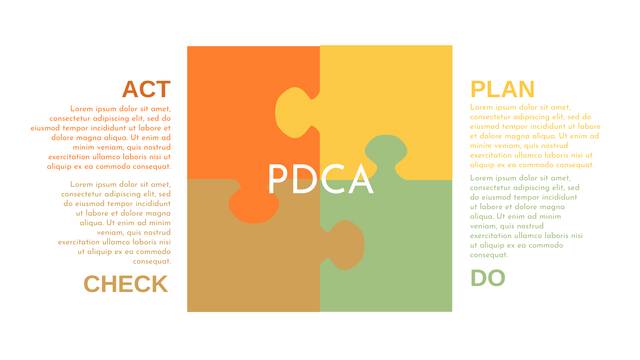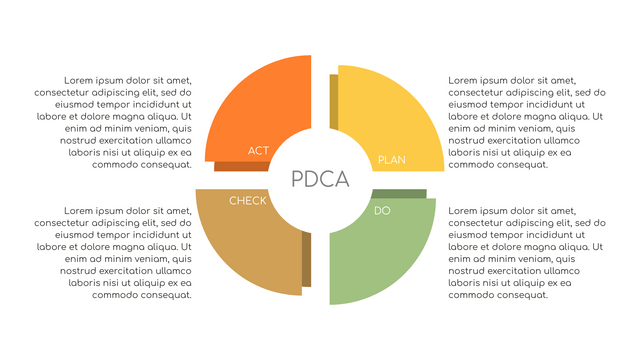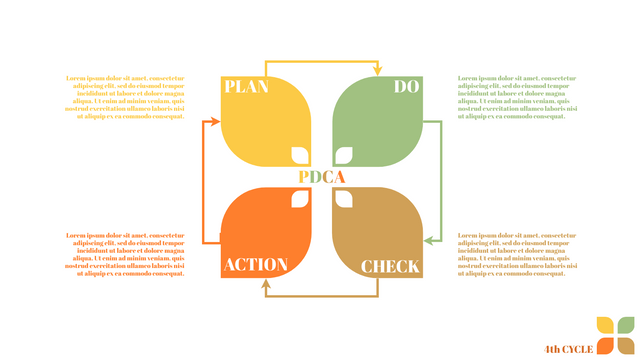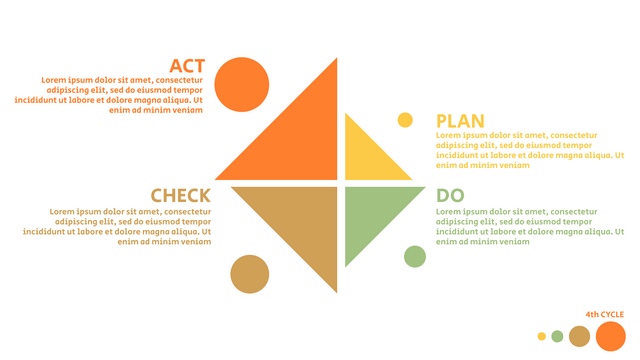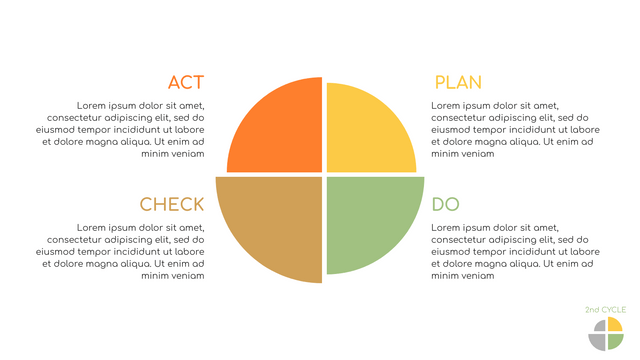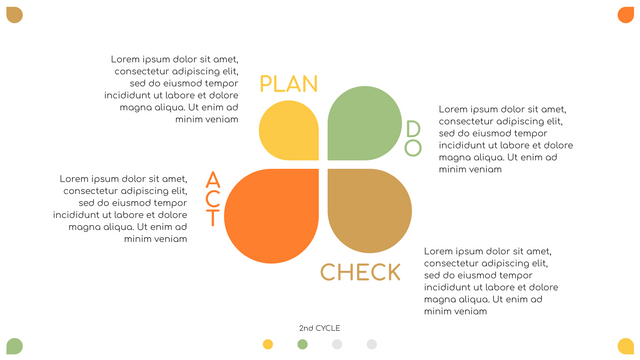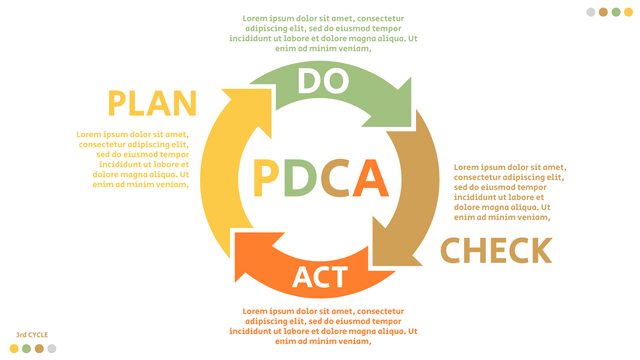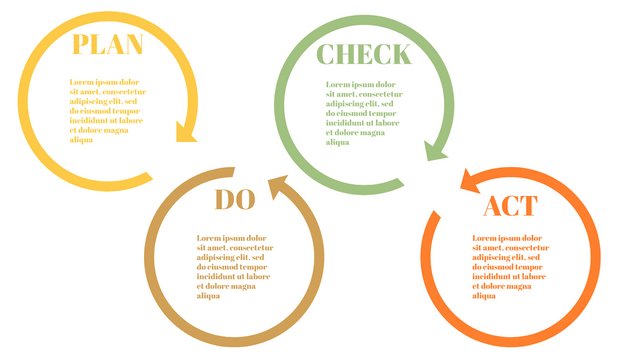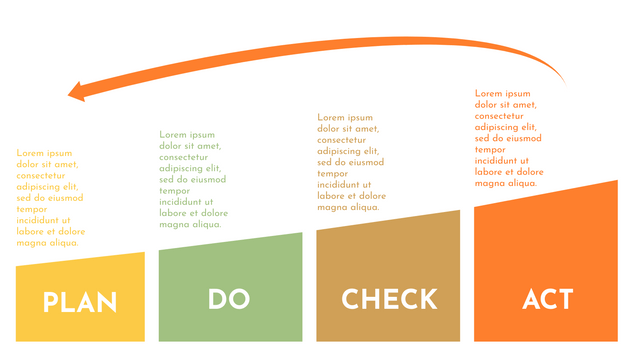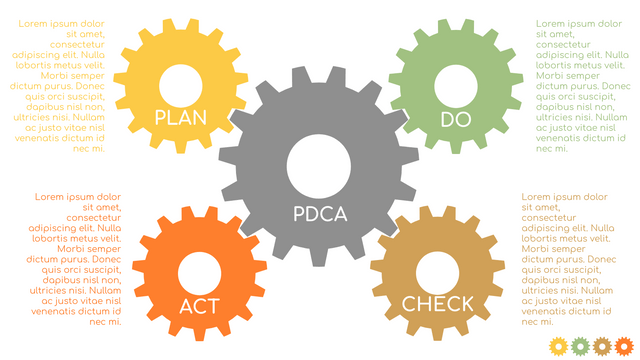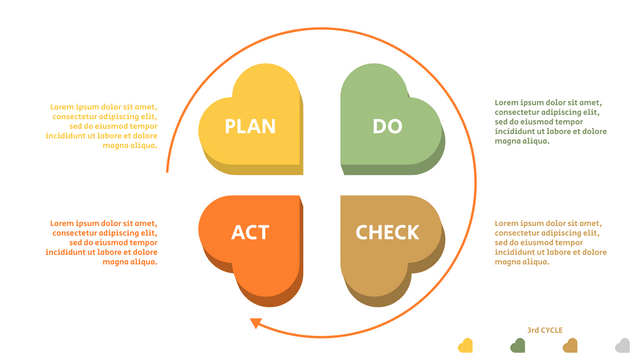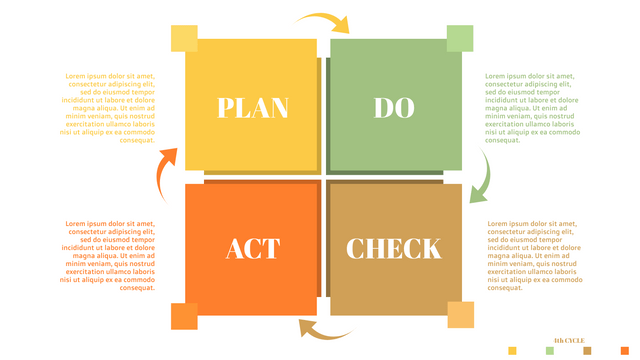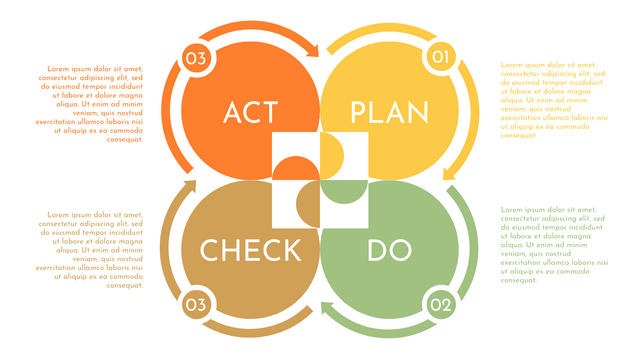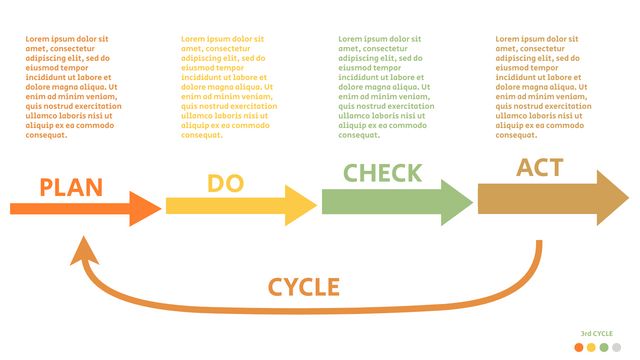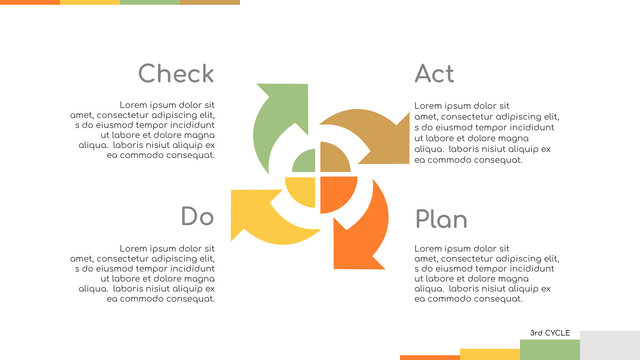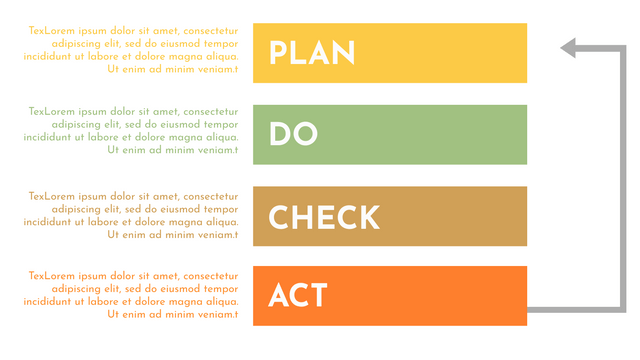The PDCA (Plan-Do-Check-Act) model first introduced by Walter Shewhart in 1929 and popularized by W. Edwards Deming in the 1950s as a quality improvement model for learning, and for improvement of a product and a process. Deming advocated the use of PDCA as a continuous feedback loop to analyze, measure, and identify sources of variations from customer requirements and take corrective action.
Quality Management Using PCDA
The PDCA approach to quality management is a continuous approach that keeps processes under control, prevents nonconformities, and encourages innovative and breakthrough changes to ensure quality and performance improvements. The improvement in quality leads to increased customer satisfaction, which in turn drives further product and process improvements.
Thus, the PDCA cycle takes place as a continuous process to
improve the quality of products and processes
to solve problems
Implement changes
Test improvement measures on a small scale before they are rolled out on a large scale
What is PDCA?
PDCA stands for Plan, Do, Check and Act :
Plan (P) : This is the planning phase: A problem is identified. The organization's employees were asked to submit their questions. The main cause of the problem is found out. Collect and collate data and tools related to problem solving.
Do (D) : This is the implementation phase: Organize a solution to an identified problem. You need to develop different strategies to solve this problem.
Check (C) : This is the review phase: review and compare the situation before and after implementation of the solution.
Act (A) : This is the improvement solution phase: In an ideal world, after the first three phases, all knowledge is available to introduce the new process or the new product on a large scale. The team can now implement well-designed solutions and plan solutions for the next improvement cycle.
